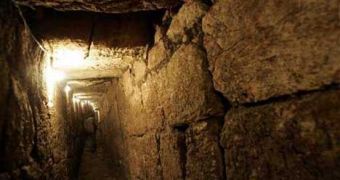Archaeologists digging at the site of the Sobibor Nazi death camp in Poland have reportedly found traces of an escape tunnel that measured up to 32 feet (10 meters) in length and that reached beyond the camp's border.
By the looks of it, the archaeologists came across the traces of this escape tunnel quite by accident.
Thus, it appears that they only found the tunnel when trying to dig our two rows of buried barbed wire located fairly close to a sonderkommando barrack.
“We were excavating near where the sonderkommando barrack was and we came across two rows of buried barbed wire,” archaeologist Wojciech Mazurek said, as cited by Live Science.
“Digging down we found the traces of the tunnel. It was about as wide as a human, and we are 99 percent certain that it was an escape tunnel,” he further detailed on his and his colleagues’ discovery.
Sonderkommandos were work units made up of camp prisoners who were forced to help Nazis kill others in gas chambers and then dispose of the bodies.
Many believe that it makes sense that the entrance to an escape tunnel was found close to several such workers' barrack.
The same source informs us that the tunnel was built at about 5 feet (roughly 1.5 meters) below ground.
Despite the fact that it was wide enough to allow a human to pass through it, no evidence to suggest that it has actually been used by prisoners in order to get beyond the camp's border has yet been found.
Archaeologists hope that it will not be long until they are able to offer more information on this topic.
However, they wish to stress the fact that their work is made all the more difficult by the fact that, after a prisoners' uprising in October 1943, the Nazis destroyed the camp and did their best to hide all evidence that it had ever existed.
As the years went by, trash also built up at this site.
As archaeologist Yoram Haimi put it, “The area we were excavating has been disturbed and plundered many times over the years since the war.”
“It's a mess containing human bones, human ash, glass, pieces of metal and a lot of waste.”
The Sobibor Nazi was operated between 1942-1943. Some 167,000-250,000 people are estimated to have been killed there by the Nazis.

 14 DAY TRIAL //
14 DAY TRIAL //